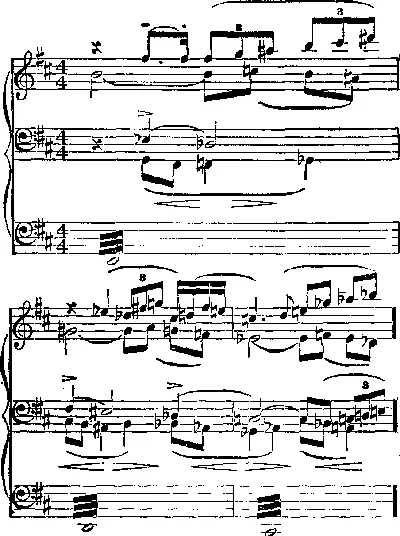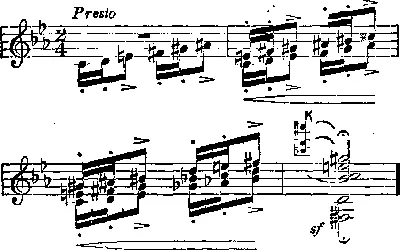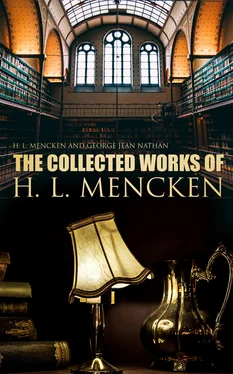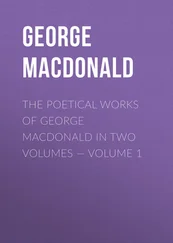George Nathan - The Collected Works of H. L. Mencken
Здесь есть возможность читать онлайн «George Nathan - The Collected Works of H. L. Mencken» — ознакомительный отрывок электронной книги совершенно бесплатно, а после прочтения отрывка купить полную версию. В некоторых случаях можно слушать аудио, скачать через торрент в формате fb2 и присутствует краткое содержание. Жанр: unrecognised, на английском языке. Описание произведения, (предисловие) а так же отзывы посетителей доступны на портале библиотеки ЛибКат.
- Название:The Collected Works of H. L. Mencken
- Автор:
- Жанр:
- Год:неизвестен
- ISBN:нет данных
- Рейтинг книги:4 / 5. Голосов: 1
-
Избранное:Добавить в избранное
- Отзывы:
-
Ваша оценка:
- 80
- 1
- 2
- 3
- 4
- 5
The Collected Works of H. L. Mencken: краткое содержание, описание и аннотация
Предлагаем к чтению аннотацию, описание, краткое содержание или предисловие (зависит от того, что написал сам автор книги «The Collected Works of H. L. Mencken»). Если вы не нашли необходимую информацию о книге — напишите в комментариях, мы постараемся отыскать её.
The Philosophy of Friedrich Nietzsche
A Book of Burlesques
A Book of Prefaces
In Defense of Women
Damn! A Book of Calumny
The American Language
The American Credo
Heliogabalus: A Buffoonery in Three Acts
Ventures Into Verse
The Collected Works of H. L. Mencken — читать онлайн ознакомительный отрывок
Ниже представлен текст книги, разбитый по страницам. Система сохранения места последней прочитанной страницы, позволяет с удобством читать онлайн бесплатно книгу «The Collected Works of H. L. Mencken», без необходимости каждый раз заново искать на чём Вы остановились. Поставьте закладку, и сможете в любой момент перейти на страницу, на которой закончили чтение.
Интервал:
Закладка:
Fifth Pallbearer
Yes; that’s the way it goes.
Sixth Pallbearer
First one, and then somebody else.
First Pallbearer
Who it’ll be you can’t say.
Second Pallbearer
I always say the same: we’re here to-day——
Third Pallbearer
( Cutting in jealousy and humorously. ) And to-morrow we ain’t here.
( A subdued and sinister snicker. It is followed by sudden silence. There is a shuffling of feet in the front room, and whispers. Necks are craned. The pallbearers straighten their backs, hitch their coat collars and pull on their black gloves. The clergyman has arrived. From above comes the sound of weeping. )
II. FROM THE PROGRAMME OF A CONCERT
Table of Contents
"Ruhm und Ewigkeit" (Fame and Eternity), a symphonic poem in B flat minor, Opus 48, by Johann Sigismund Timotheus Albert Wolfgang Kraus (1872- ).
Kraus, like his eminent compatriot, Dr. Richard Strauss, has gone to Friedrich Nietzsche, the laureate of the modern German tone-art, for his inspiration in this gigantic work. His text is to be found in Nietzsche’s Ecce Homo , which was not published until after the poet’s death, but the composition really belongs to Also sprach Zarathustra , as a glance will show:
I
Wie lange sitzest du schon auf deinem Missgeschick? Gieb Acht! Du brütest mir noch ein Ei, ein Basilisken-Ei, aus deinem langen Jammer aus.
II
Was schleicht Zarathustra entlang dem Berge?—
III
Misstrauisch, geschwürig, düster, ein langer Lauerer,— aber plötzlich, ein Blitz, hell, furchtbar, ein Schlag gen Himmel aus dem Abgrund: —dem Berge selber schüttelt sich das Eingeweide....
IV
Wo Hass und Blitzstrahl Eins ward, ein Fluch,— auf den Bergen haust jetzt Zarathustra’s Zorn, eine Wetterwolke schleicht er seines Wegs.
V
Verkrieche sich, wer eine letzte Decke hat! In’s Bett mit euch, ihr Zärtlinge! Nun rollen Donner über die Gewölbe, nun zittert, was Gebälk und Mauer ist, nun zucken Blitze und schwefelgelbe Wahrheiten— Zarathustra flucht ...!
For the following faithful and graceful translation the present commentator is indebted to Mr. Louis Untermeyer:
I
How long brood you now
On thy disaster?
Give heed! You hatch me soon
An egg,
From your long lamentation out of.
II
Why prowls Zarathustra among the mountains?
III
Distrustful, ulcerated, dismal,
A long waiter—
But suddenly a flash,
Brilliant, fearful. A lightning stroke
Leaps to heaven from the abyss:
—The mountains shake themselves and
Their intestines....
IV
As hate and lightning-flash
Are united, a curse! On the mountains rages now Zarathustra’s wrath, Like a thunder cloud rolls it on its way.
V
Crawl away, ye who have a roof remaining!
To bed with you, ye tenderlings!
Now thunder rolls over the great arches,
Now tremble the bastions and battlements,
Now flashes palpitate and sulphur-yellow truths—
Zarathustra swears ...!
The composition is scored for three flutes, one piccolo, one bass piccolo, seven oboes, one English horn, three clarinets in D flat, one clarinet in G flat, one corno de bassetto, three bassoons, one contra-bassoon, eleven horns, three trumpets, eight cornets in B, four trombones, two alto trombones, one viol da gamba, one mandolin, two guitars, one banjo, two tubas, glockenspiel, bell, triangle, fife, bass-drum, cymbals, timpani, celesta, four harps, piano, harmonium, pianola, phonograph, and the usual strings.
At the opening a long B flat is sounded by the cornets, clarinets and bassoons in unison, with soft strokes upon a kettle-drum tuned to G sharp. After eighteen measures of this, singhiozzando , the strings enter pizzicato with a figure based upon one of the scales of the ancient Persians—B flat, C flat, D, E sharp, G and A flat—which starts high among the first violins, and then proceeds downward, through the second violins, violas and cellos, until it is lost in solemn and indistinct mutterings in the double-basses. Then, the atmosphere of doom having been established, and the conductor having found his place in the score, there is heard the motive of brooding, or as the German commentators call it, the Quälerei Motiv :

The opening chord of the eleventh is sounded by six horns, and the chords of the ninth, which follow, are given to the woodwind. The rapid figure in the second measure is for solo violin, heard softly against the sustained interval of the diminished ninth, but the final G natural is snapped out by the whole orchestra sforzando . There follows a rapid and daring development of the theme, with the flutes and violoncellos leading, first harmonized with chords of the eleventh, then with chords of the thirteenth, and finally with chords of the fifteenth. Meanwhile, the tonality has moved into D minor, then into A flat major, and then into G sharp minor, and the little arpeggio for the solo violin has been augmented to seven, to eleven, and in the end to twenty-three notes. Here the influence of Claude Debussy shows itself; the chords of the ninth proceed by the same chromatic semitones that one finds in the Chansons de Bilitis . But Kraus goes much further than Debussy, for the tones of his chords are constantly altered in a strange and extremely beautiful manner, and, as has been noted, he adds the eleventh, thirteenth and fifteenth. At the end of this incomparable passage there is a sudden drop to C major, followed by the first statement of the Missgeschick Motiv , or motive of disaster (misfortune, evil destiny, untoward fate):

This graceful and ingratiating theme will give no concern to the student of Ravel and Schoenberg. It is, in fact, a quite elemental succession of intervals of the second, all produced by adding the ninth to the common chord—thus: C, G, C, D, E—with certain enharmonic changes. Its simplicity gives it, at a first hearing, a placid, pastoral aspect, somewhat disconcerting to the literalist, but the discerning will not fail to note the mutterings beneath the surface. It is first sounded by two violas and the viol da gamba, and then drops without change to the bass, where it is repeated fortissimo by two bassoons and the contra-bassoon. The tempo then quickens and the two themes so far heard are worked up into a brief but tempestuous fugue. A brief extract will suffice to show its enormously complex nature:

A pedal point on B flat is heard at the end of this fugue, sounded fortissimo by all the brass in unison, and then follows a grand pause, twelve and a half measures in length. Then, in the strings, is heard the motive of warning:

Out of this motive comes the harmonic material for much of what remains of the composition. At each repetition of the theme, the chord in the fourth measure is augmented by the addition of another interval, until in the end it includes every tone of the chromatic scale save C sharp. This omission is significant of Kraus’ artistry. If C sharp were included the tonality would at once become vague, but without it the dependence of the whole gorgeous edifice upon C major is kept plain. At the end, indeed, the tonic chord of C major is clearly sounded by the wood-wind, against curious triplets, made up of F sharp, A flat and B flat in various combinations, in the strings; and from it a sudden modulation is made to C minor, and then to A flat major. This opens the way for the entrance of the motive of lamentation, or, as the German commentators call it, the Schreierei Motiv :
Читать дальшеИнтервал:
Закладка:
Похожие книги на «The Collected Works of H. L. Mencken»
Представляем Вашему вниманию похожие книги на «The Collected Works of H. L. Mencken» списком для выбора. Мы отобрали схожую по названию и смыслу литературу в надежде предоставить читателям больше вариантов отыскать новые, интересные, ещё непрочитанные произведения.
Обсуждение, отзывы о книге «The Collected Works of H. L. Mencken» и просто собственные мнения читателей. Оставьте ваши комментарии, напишите, что Вы думаете о произведении, его смысле или главных героях. Укажите что конкретно понравилось, а что нет, и почему Вы так считаете.












